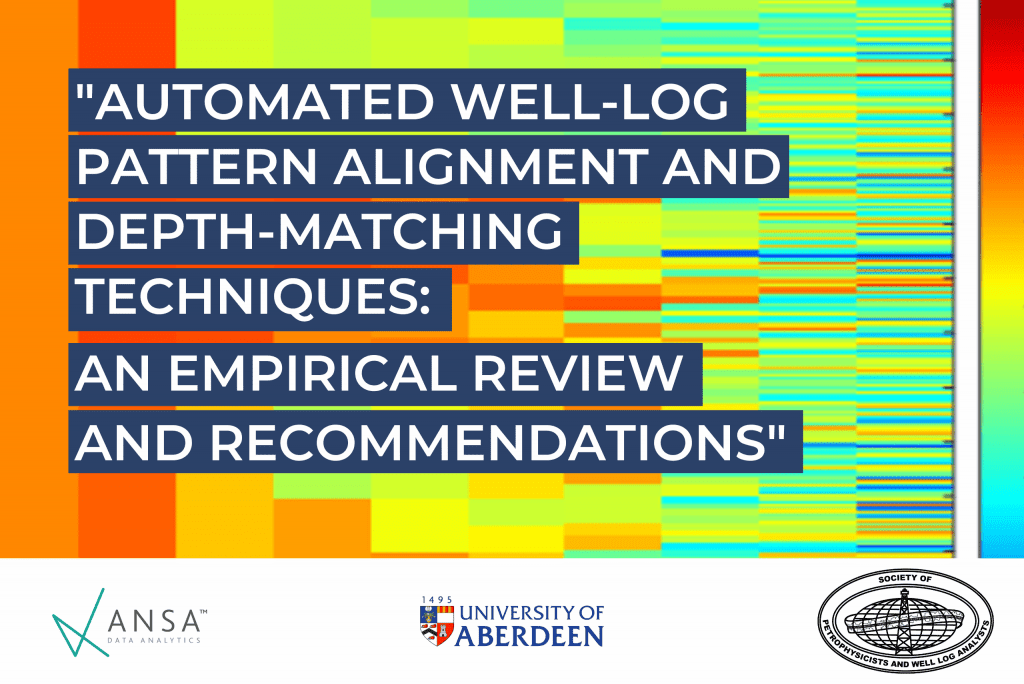
SPWLA research paper: a collaboration between the University of Aberdeen School of Engineering and ANSA data analysts.
ANSA’s Maurillio Addario and John Guntoro are proud to have co-authored a paper “Automated Well Log Pattern Alignment and Depth-Matching Techniques: An Empirical Review and Recommendations” with a team from the School of Engineering at the University of Aberdeen: Chinedu Pascal Ezenkwu, PhD., Andrew Starkey, Vahid Vaziri. The paper has been published in the February issue of Petrophysics, a journal by the Society of Petrophysicists and Well Log Analysts (SPWLA).
We are extremely proud of the team on this achievement.
“Automated Well Log Pattern Alignment and Depth-Matching Techniques: An Empirical Review and Recommendations”
ABSTRACT
Well-logging has been an integral part of decision-making at different stages (drilling, completion, production, abandonment) of a well’s history. However, the traditional human-reliant approach to well-log interpretation, which has been the most common practice in the industry, can be time-consuming, subjective, and incapable of identifying fine details in log curves. Previous studies have recommended automated approaches as a candidate for addressing these challenges. Despite the progress made so far, what is not yet clear from the existing literature is the extent to which these automated approaches can dispense with human interventions in real-life scenarios.
This paper presents an empirical review of different depth-matching techniques in real-life timelapse well-logs, primarily focusing on Gamma Ray and the extent to which the outcomes of these techniques match the results from a human expert. Specifically, the performances of dynamic time warping (DTW), constrained DTW (CDTW), and correlation optimised warping (COW) are investigated. The experiments also consider the effects of filtering and normalisation on the performance of each of the techniques. Concerning the correlations of each technique’s outcome with the reference data and an expert-generated outcome, this research identifies and discusses its key challenges, as well as providing recommendations for future research directions.
Although the COW technique has its limitations, as discussed in this paper, our experiments demonstrate that it shows more potential than DTW and its variants in the well-log pattern alignment task. The work entailed by this research is significant because identifying and discussing the limitations of these techniques is vital for solution-oriented future research in this area.
Petrophysics Vol. 64 No. 1, February 2023 is available to read on SPWLA
ANSA Customer Support
+44 (0) 1224 336624 sales@ansa-data.com
Aberdeen Data Hub
Viking House, 1 Claymore Avenue, Aberdeen Energy Park AB23 8GW. UK
Houston Data Hub
Suite 330 9940 W. Sam Houston Parkway S. Houston, Texas 77099. USA